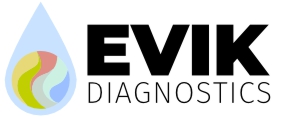What is an excipient in the case of lyophilized beads?
An excipient is the bulking agent that forms the hard core of the lyophilized beads. It also serves as cryogenic protection during freeze-drying, as well as a stabilizing agent for long-term reagent storage.
What excipients will you use for our assay when lyophilizing the beads?
We do not have a fixed excipient that works for all reagent mixtures. We advise that our clients run an initial screening experiment with several excipients to determine the best excipient for each specific reagent and application. We can recommend a short list of our preferred excipients for immunoassays, molecular and enzymatic assays.
How much excipients (volume) will you use in our assay?
Excipients should be at least 10% w/v to form robust beads that can be picked up by tweezers or pneumatic tools. The general rule – the more excipient, the harder the beads.
How do we add excipients to the reagent mixture?
Excipients can be added to the reagent mixture either as a stock solution or dry powder. If we add the excipient, we prefer receiving double-concentrated assay reagent for mixing 1:1 with the excipient stock. However, we can add dry excipient if a concentrated reagent is not an option.
If we have a final reaction volume of, for example, 20 µL, does the bead volume have to be the same (20 µL)?
The bead volume reflects the volume of active assay component plus volume of excipient. Bead volume is not directly related to the final volume of the reaction. Beads are rapidly reconstituted in any required volume of sample or diluent.
How big are the beads?
Our most common bead volumes are between 5 and 20 µL. The general rule – bead size is related to the size of the liquid drop used to form the bead.
| Drop Volume (µL) | Bead Diameter (mm) |
|---|
| 5 |
2.0 |
| 10 |
2.5 |
| 20 |
3.1 |
According to our experience, we can reliably and accurately dispense bead volumes from 5 µL to 20 µL with variability less than 3%.
We already know that certain excipients do not work for our assay, can you recommend potential alternative excipients?
Yes, we can recommend a short list of our preferred excipients for each type of assay, whether it be immunoassays, molecular assays or enzymatic assays.
We have many different components in our reagent, is this a problem?
A multi-component reagent is not always a problem but the best answer to this question is empirical. We suggest performing a quick trial with a few excipients to identify whether a problem exits.
We use glycerol to stabilize our reagent, is that okay?
Glycerol-free (or lyo friendly) reagents produce the best results. Some of our clients use dialysis or spin desalting columns to remove glycerol from their formulas. In some cases, we can tolerate up to 1% glycerol in the final formula.
What is the stability of lyophilized beads?
Beaded reagent stability depends on specific reagent formulas and excipients. We support our clients’ assay development processes and stability studies by offering advice on excipient selection, as well as providing quick turnaround times. Most of our clients are able to achieve one- or two-years’ stability on their assays.
Can we ship reagents to you cold or on dry ice?
We accept any form of shipment. We can receive your mixes ready to dispense with pre-mixed excipients or we can build mixes from reagent components following your mixing protocols.
What is the typical duration of development projects?
All assays have different degrees of complexity and optimization requirements. We run as many batches as required to complete each client’s design and development process. Our clients lead their projects and decide how quickly they wish to proceed.
Can you package my beads in my special vial or tube?
Yes, we can place your beads into standard tubes, vials or plates and can also package into any custom cartridges.
When you package, do you seal the beads into further foil sealed pouches?
Our standard is to place all beads in bulk into glass or plastic containers that are sealed in foil pouches with a desiccant. However, if you require or desire special packaging, we are happy to discuss other options.
What is the advantage of using a lyophilized bead versus lyophilized assay reagent directly in microfluidic devices?
Producing Lyophilized reagent beads are more cost-effective. 1) Beads are more stable for storing and shipping of reagents 2) If you have a quality control issue within your reagent(s) you can assess the beads and only replace the reagent with the issue vs the entire assay reagent and or cartridge 3) Beads take much less space when storing versus liquid reagent or reagents already placed within a device or cartridge.
What if we want to trial your beads, excipients with our reagents? What are the steps?
Step 1: If you have chosen your excipient, we can manufacture small experimental batch(s) of beads. You may wish to vary the concentration of the reagent vs. the excipient. If you have not chosen your excipient, you can provide several excipients you would like to try or we can recommend a list to you, you may want to try only one or up to five different excipients.
Step 2: We will ship your beads back to you for you to evaluate.
Step 3: You may choose to run several experiments to get your exact reagent/excipient recipe and reaction volume desired.
Step 4: Once you have settled on your recipe, you would most likely want to proceed to trial batch sizes to evaluate.
Step 5: Is to move to production size batches.
All companies move at different paces depending where they are in their own development as well as their individual workflow and company/organization budgets.
Do you have ISO 13485 Certificate
You can download our ISO 13485 Certificate
here.
